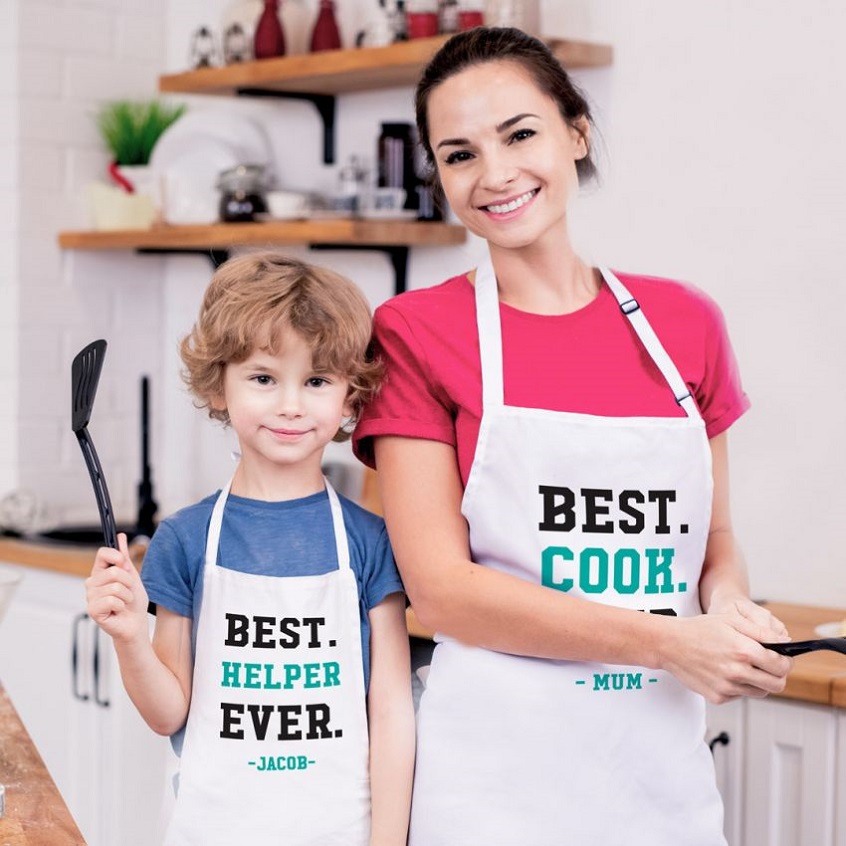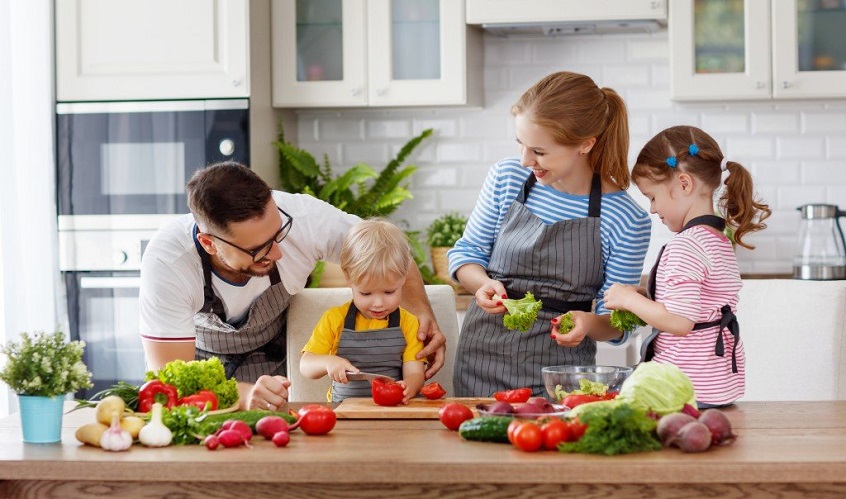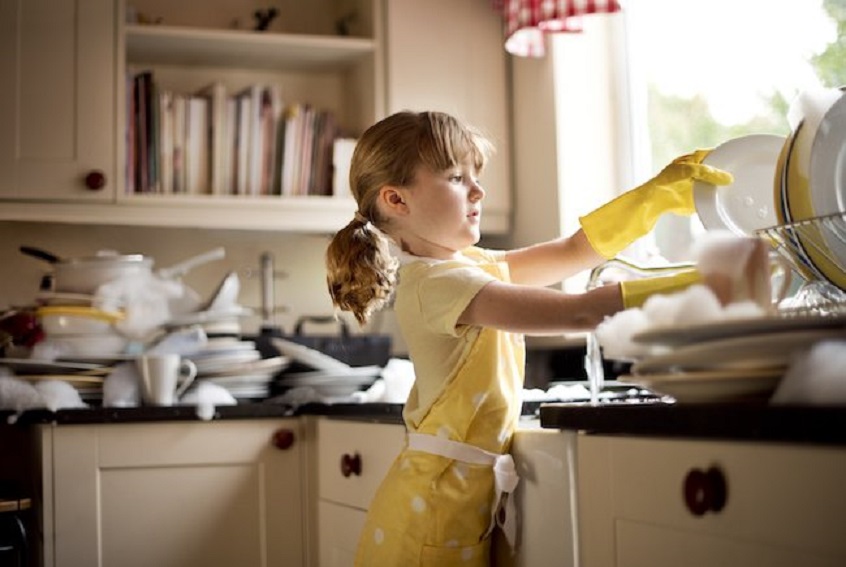
Cooking with Kids: Guide to Children’s Aprons
As a parent, you’re always searching for a way to stimulate your kids’ senses with experiences that are both fun and educational. Kids find amusement in the smallest things, so while flying kites may be an exciting activity, you can have fun with them in everyday things too, like cooking up a meal together in the kitchen.
Children are naturally inquisitive creatures. They want to know how everything works and why things happen the way they do, and this curiosity is often expressed in cooking. It is an everyday occurrence for adults, but it’s a whole new world ready to be explored for kids.
Including your kid in the kitchen not only cures their curiosity but also teaches them life skills that will give them a sense of independence, one recipe at a time. Plus, it creates an unbreakable parent-to-child bond, and core memories that your child will cherish for the rest of their life.
But playing in the kitchen can be messy! Children sometimes get so excited about the process they forget about spilling ingredients or even washing their hands before they start. Before anything, you need to train your little sous chef about kitchen equipment, how to use them properly, and their many benefits.
It would also help to teach them about hygiene with their own cooking aprons for kids. This will give them even more independence to try out new things, and you’ll have some peace of mind knowing that they’re safe and clean.
Investing in such equipment pieces is the best start to the bonding journey. Your little ones won’t fit into a regular apron, and you’ll need something to protect their clothes, so, on the market, you will find an array of specially designed little aprons.
Contents
Guide to Children’s Aprons

When purchasing unique cooking aprons for kids, you’ll have an exhausting choice of designs and styles. Still, most importantly, they need to be finely sewn and with quality materials that provide protection. Finding a cute apron made from a dainty material will only be counterproductive, plus last only a short time.
Apart from making your kid feel like a top chef, it needs to absorb all spills and splashes that come their way, so opt for thicker cotton materials. This will guarantee no favourite outfits are ruined and it will cut mum’s washing process. Aprons are made to get messy while cooking, so focus more on having fun rather than protecting clothes from permanent stains.
Another aspect you have to think about when buying kids aprons is how easy it is to put them on and off. Children don’t like the idea of complicated garments and sometimes throw a fit over layers, so choose a model that goes over the head to avoid bothersome knots and tangles of the strings.
In addition to that, consider an adjustable design that will accommodate your child as it grows. This way, you don’t have to buy a new one every few months as the more durable ones come with a hefty price tag.
Functionality aside, the various designs of cooking aprons for kids are adorable, and picking one with your children can be a fun shopping trip. The market is filled with options for all genders, and some shops even give you the chance to make your customisable models, with quirky designs and embroideries like your little one’s initials or nickname. Picking out can be an excellent bonding experience between you and your child and maybe the birthing place of a life-long hobby or even a career.
Including Your Child in the Kitchen

The thought of your little one handling a knife or being around fire might give you the shivers, especially as a first-time parent, but there are simple and safe ways to involve them, which will show them you are trusting and give them a little more confidence with each try. Here are some tips and equipment for including your tiny helper in the kitchen.
Cookbooks for children
Before you head to the kitchen, give your kids an age-appropriate cookbook filled with easy recipes they can follow. This will help educate them about food, and give them the chance to understand the process all on their own. On top of that, they’ll pick out their meals, so you won’t have to worry if they’ll make a hassle about liking the one you’ve prepared.
Prepping the ingredients
After they’ve picked a recipe, another simple way they can help is by prepping all of the ingredients. Layout the ingredient and have them name each one or let them wash the veggies and turn this into a learning opportunity about textures, colours, and even tastes.
Child-safe utensils
After the age of five, kids can cut up soft foods like fruits, and you can purchase kid-friendly, dull knives just for that. You can supervise them during the whole process and educate them about using knives safely. Apart from helping while you cook, this will ensure that your child safely eats all on their own.
Mixing and stirring ingredients
As a more advanced step into cooking, you can let your child measure, mix, and stir ingredients into a bowl. Kids love playing with their food, so this will be both a fun and an educational activity for them. Of course, to keep mess at bay, remember to use the practical aprons for kids. Let them carefully study the measuring equipment and learn about numbers while making their new favourite meal.
Setting the table
Once the meal is done, your kids can help with setting the table for the whole family. Let them set plates and utensils, or put down a tablecloth and be creative with the arrangements. This will make them feel responsible, plus remove them from the kitchen long enough for you to handle the hot dishes coming out of the oven.
Washing dishes

Although adults sometimes dread this step, after cooking for hours, children love playing with water, so this will make them ecstatic. Set up a chair so they can reach the faucet, give them a fun-coloured sponge, and let them wash up some of the smaller dishes and equipment you’ve used. This is an essential step in involving your children in the kitchen as it teaches them to be more organized and always clean up after each meal.

